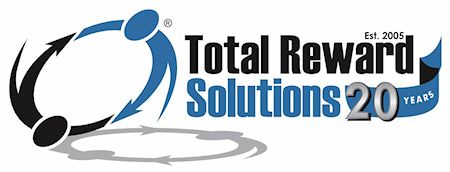April 8, 2015
Does your company offer a program of incentive plans to reward employees for meeting performance goals? If so, you have clearly taken a progressive approach to keeping employees engaged and motivated to deliver better bottom line results. At least that’s the goal, right? But do you really know if your employee incentive plans are working? Are you confident that – as currently structured – your incentive program truly nurtures a win-win environment for your business and your employees? If you’re not sure what makes an incentive program successful, your plans could be ineffective or might even threaten your profitability. Here’s how to make sure your incentive program truly motivates and rewards employee performance:
Consider the Big Picture
Your employee performance incentive program will likely influence your business at three levels: corporate, sales, and departmental. Because sales and departmental performance roll up into the overall corporate impact, incentives at those levels must be well-designed and productive. So, with these three levels in mind, let’s dig deeper.
To evaluate your incentive program and its success, you should analyze it from three perspectives:
- Personal Performance (Is the program encouraging and producing the desired employee behaviors and results?)
- Financial (How is the program affecting the bottom line, and what are the costs?)
- Differentiation (Are your top performers also your top incentive earners?)
Judge the Personal Performance Success of Your Incentive Program
Often, the introduction of an incentive program can spark improved employee productivity. Unfortunately, this excitement and energy – as demonstrated by improved personal performance – can be short lived. Continuing communication to remind employees of their incentives, benchmarks and progress in meeting performance goals can certainly help keep them motivated. To make sure this happens:
- Measure employee productivity before, during and after incentive program cycles. Did the plan drive the desired behaviors? Analyze (or simply observe) performance at various times to make sure.
- If your plan has MBOs (Management by Objectives), analyze incremental and individual results to determine if these objectives were set too low or too high. Remember that unreachable objectives can be de-motivators.
- Hold employee focus groups to find out what they think is (or is not) working; and if the incentive program meets their needs and expectations.
Judge the Financial Success of Your Incentive Program
Behavior, attitudes and productivity all impact the bottom line. To make sure your employee incentive program helps boost financial performance and profitability:
- Measure financial performance before, during and after incentive program cycles. Based on the numbers, can you clearly see whether your incentive program is delivering the expected return on investment? Keep in mind that many factors can impact short-term financial performance, including market factors beyond your control; so don’t make knee-jerk changes to your plan unless those changes are clearly necessary to correct a plan deficiency.
- Zero in on key financial performance metrics. How did your program pay relative to sales or earnings? Did your company have low performance earnings yet pay high on incentive plan results? If the macro view of reward-to-performance ratio seems off, consider making changes to the program.
- Look at results by department. Are individual team payouts in alignment with the performance of larger organizational units? If this micro view of reward-to-performance indicates problem areas, make sure that any overall program changes benefit the company as a whole.
- Compare your incentive program payouts to other companies in your market. If your plan is far below those of key competitors, you could lose top performers.
Judge the Differentiation Success of Your Incentive Program
Does your employee incentive plan truly differentiate and reward your top performers? If everyone seems to get a “bonus” regardless of performance, your plan could be a de-motivator to your superstars. To make sure your incentive program rewards excellence:
- Analyze how many employees earned below target, at target and above target?
- Based on this, determine if the targets were realistic. A good rule of thumb is that 10 to 20% should be rewarded at the top level, 60 to 80% should be rewarded less in the mid-range, and 10 to 20% should be rewarded considerably less (or nothing) for sub-par performance.
The Bottom Line:
Employee performance incentive programs can be complicated. Designed, implemented and administered correctly, they can inspire performance excellence, company loyalty, and healthier corporate profitability. Poorly crafted plans, however, can lead to discouragement, dissention and costly employee turnover. If you’d like to learn more about how your company can design and deploy a truly effective employee performance incentive program, contact me today at 317.589.8529.
